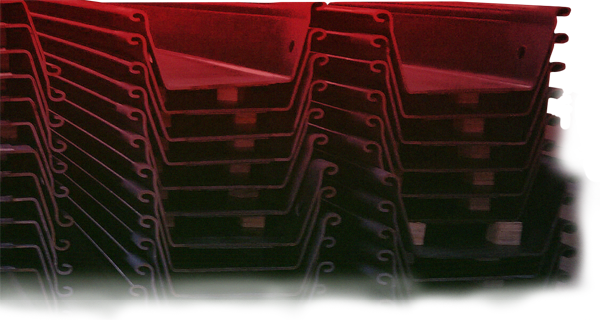The Power of Steel Engineers and Suppliers’ Collaboration in the Integrity of the Building

How does the collaboration between steel engineers and suppliers improve building integrity?
- Ensures material quality
- Aligns with project specifications
- Boosts efficiency and reduces costs
- Enhances safety and risk management
- Promotes innovation
Overview
- Structural integrity depends on more than just strong materials—it thrives on coordination between design and supply.
- Collaboration between steel engineers and suppliers ensures quality, precision, and safety at every stage.
- Metal Exponents Inc. bridges this partnership, delivering certified steel solutions built for enduring performance.
Even the most advanced steel can’t guarantee a building’s strength if there’s a disconnect between the design and supply stages.
This happens when the engineers’ specifications don’t align with the suppliers’ material quality and timelines. As a result, structural issues may arise from poor coordination.
That being said, the power of steel engineers and suppliers’ collaboration becomes a tipping point for a project’s success.
In this article, we’ll explore how the combined expertise of the industry professionals and a trusted steel supplier in the Philippines reinforces a building’s integrity.
Ensures Material Quality
Proactive communication and regular updates with steel suppliers ensure that material quality consistently meets established standards.
When technical requirements are clearly defined and understood by both parties, project execution becomes more efficient and precise.
Through this collaboration, engineers can easily request material certifications while suppliers maintain robust quality control procedures.
Consistent quality assurance protects both structural integrity and overall project value. It is a critical factor in every construction project because it determines the building’s strength, stability, and long-term performance.
Aligns with Project Specifications

Construction projects greatly vary in specifications, each with unique performance and design requirements. That’s why establishing a solid partnership with suppliers is essential to ensure every material aligns precisely with project details.
This alignment helps prevent dimensional inaccuracies that could compromise the overall build quality of a building. A consistent effort to ensure that materials meet exact tolerances and design expectations boosts project flow.
Through this collaborative relationship, engineers gain an upper hand through streamlined construction with fewer on-site adjustments. This results in improved efficiency, reduced costs, and stronger project performance.
Boosts Efficiency and Reduces Costs
The power of collaboration lies within joint resource planning and fast-tracked operations.
Having open communication not only stops after procurement, but it continues throughout logistics and delivery to ensure smooth coordination.
Steel engineers and suppliers can coordinate their supply chain management, from real-time inventory tracking to predictive demand forecasting. These systems can help anticipate and quickly resolve bottlenecks, further improving performance efficiency.
By doing so, both parties benefit from fewer delays and reduced operational costs. The result is a more reliable supply process that supports timely, high-quality construction outcomes.
Enhances Safety and Risk Management

A well-orchestrated partnership between engineers and steel suppliers helps identify, mitigate, and control potential hazards within the supply chain.
Such coordination is only effective when both parties fulfill their responsibilities in risk assessment and management. For example, suppliers must ensure product traceability, while engineers verify that materials comply with design and safety specifications.
As a result, projects are better protected—not only in terms of structural integrity but also workforce safety.
This collaboration reduces safety incidents, enhances regulatory compliance, and promotes a culture of accountability across all operations.
Promotes Innovation
Through cross-functional partnerships, they gain access to cutting-edge technologies and valuable market insights.
One effective way to promote innovation is through technology sharing and licensing agreements. These practices encourage the development of breakthrough products, advanced materials, and improved manufacturing techniques.
This forward-thinking approach strengthens both current and future building integrity while supporting long-term sustainability goals.
By embracing innovation together, industry partners can achieve durable, efficient, and environmentally responsible construction outcomes.
What Engineers Do
Engineers carefully analyze load requirements, select suitable materials, and design structural connections that comply with safety standards and performance criteria. They supervise on-site inspections to extend the structure’s lifespan.
Their expertise ensures that any design or material adjustments maintain the building’s safety, integrity, and long-term durability.
What Suppliers Do
Trusted suppliers, like Metal Exponents Inc., play a vital role by ensuring all steel products meet strict industry and project-specific standards. These should be supported by certifications and compliance documents.
They help maintain construction timelines through timely delivery and offer valuable guidance, from material selection to custom fabrication, to achieve overall structural integrity.
Key Takeaway
Behind every strong and reliable structure is a partnership built on precision and trust. When steel engineers and suppliers work hand in hand, every material meets exact specifications. This factor is critical in reinforcing safety, efficiency, and lasting integrity in construction.
At Metal Exponents Inc., we understand that collaboration is the foundation of quality. We help bridge expertise with dependable steel supply. Reach out to us today and turn your designs into structures that stand the test of time.


